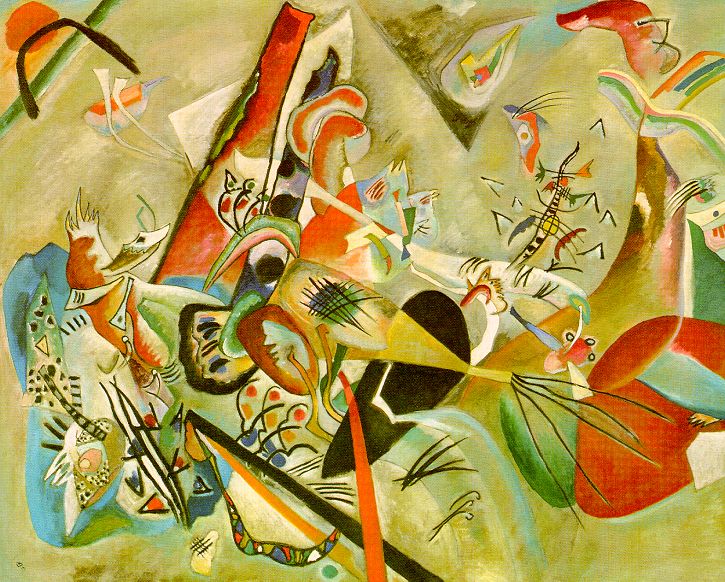Description
The "Gray" painting of 1919, created by Wassily Kandinsky, is a work that encapsulates the spirit of abstract art in one of its most significant stages. This piece, which is within Kandinsky's corpus, reflects both his personal and cultural tensions of his time. Through its use of color and shape, the artist manages to convey a deep emotion and a vast sense of space, which refer to their theories about synesthesia and the relationship between music and painting.
The color palette used in "in gray" is predominantly gray, which leads to a nuanced exploration of shades and textures within a seemingly monotonous range. However, this use of gray is not simply a monochromatic resource, but becomes a vehicle to explore the subtleties of color and shape. Kandinsky applies different techniques to generate variations and contrasts, creating a sense of movement and depth despite the apparent stability of gray. The surface of the painting has overlapping elements that seem to vibrate, interacting with each other through a visual dance that can be interpreted as a representation of life itself.
As for the composition, "in gray" is characterized by the disposition of geometric shapes that suggest both order and chaos. Lines and figures are perceived that, without being representative of any specific object, manage to transmit a sense of connection to the viewer. These forms, which seem to flow and merge into the pictorial space, refer to the idea of an abstract reality where the interpretation is open to the personal experience of the observer. In this sense, the absence of human figures or specific narrative elements allows the work to work as a field of possibilities, promoting an internal dialogue in the viewer.
Kandinsky, as a pioneer of the abstract, experimented with different styles and techniques throughout his career, but "in gray" is at a significant moment of his career, since he coincides with his return to Europe after World War I. This piece, therefore, is not only a reflection of the artistic growth of the master, but also an answer to the turbulence of his time. When addressing the work, it is important to take into account its historical context and the influences that the artist received from both modern art and contemporary philosophical thinking.
Throughout his career, Kandinsky continued to explore the use of color and the way in an attempt to evoke emotions and complex sensations. "In gray" can be seen as a bridge between its previous periods, more colored, and its evolution towards a more abstract visual language. paintings As "VII composition" and "Improvisation 28" show a more vibrant palette and a more expressive approach. In contrast, this work contemplates an introspection that invites reflection on the state of the human being in times of uncertainty.
In conclusion, "in gray" of 1919 is a testimony of the Master of Wassily Kandinsky in the exploration of the abstract. More than a mere visual representation, this work becomes a space for meditation and contemplation where the interaction of gray shapes and tones establishes a deep connection with the viewer. Kandinsky's legacy is still alive in the dialogue that his work proposes on the perception of art and the nature of reality, and "in gray" is established as a fundamental work in understanding his contribution to the abstract movement.
KUADROS ©, a famous paint on your wall.
Hand-made oil painting reproductions, with the quality of professional artists and the distinctive seal of KUADROS ©.
Art reproduction service with satisfaction guarantee. If you are not completely satisfied with the replica of your painting, we refund your money 100%.

